Halloween
Understanding Halloween ⇔
Holiday: Halloween© Oct 2024 Michael Krigline, MA
Note to teachers: This was created for a “conversational English” class; scroll down for a “lower English level” version.
Underlined terms are explained in the vocabulary section below.
October 31 is Halloween. Like other European holidays, this one has changed as it passed from culture to culture. Today, it is celebrated as a fun day for children in America, and in many other countries; but few people understand the roots of this holiday.
Over 2000 years ago, Halloween (originally called Samhain) marked the Celtic New Year. It was believed that the veil between our world and the spirit world was thinnest, so the ghosts of dead people could walk among us. Sometimes, these ghosts would be disguised, which is a root of modern Halloween costumes. Because of its roots, Halloween decorations are often related to evil or death (ghosts, witches, the color black, etc.)
Halloween gets its name from “All Hallows Even,” referring to the EVENing before “All Hallows Day” or “All Saints Day,” celebrated by Christians since the 8th century on November 1. On “All Hallows Even” (Oct 31) 1517, an influential teacher named Dr. Martin Luther nailed a list to a church door in Germany, challenging leaders to return to the Bible’s teachings. Ever since, Halloween has also been celebrated as “Reformation Day.”
On Halloween when I was growing up in America, children liked to wear costumes and visit neighbors. We knocked on doors and yelled: “Trick or treat!” This earned a few pieces of candy. On TV every year, we watched the classic film The Wizard of Oz with its costumed characters and scary witch and monkeys! In recent years, parents worry about what strangers might give to children so door-to-door trick-or-treating is less common. Trusted organizations like churches and libraries sometimes offer alternative parties. For example, a church might host “Trunk or treat,” when members decorate the trunk of their car, passing out sweets or small prizes to costumed visitors. If you live in America and see a sign about “Trunk or treat”, you don’t need to be a member to participate–go have some fun!
Some adults like Halloween, too. You may see them wearing costumes to work, or at Halloween parties. Watching horror films is another part of their celebration.
Jack-o-lanterns (carved pumpkins) are a popular decoration, and carving them is a fun family activity. As the story goes, a stingy man named Jack tricked the Devil to save his soul. After Jack’s death, both heaven and hell refused entrance, so Jack roams the earth on Halloween with a hot coal from hell to light his way. To make a lantern for his coal, Jack carved a turnip (to look like an evil face, to frighten other ghosts), but Irish immigrants to America discovered that pumpkins make better candle-holders than turnips!
Today, the “evil” roots of Halloween still affect decorations, and those who oppose this holiday think “evil” is not something to play around with. But to many children, Halloween is mainly a time to dress up like a favorite TV/movie character, and get lots of free candy.
Vocabulary: (underlined terms in the article above; *key terms) sth = something; sb = somebody.
- Celtic: the Celts lived in ancient England before the time Jesus was born (0 AD/BC); today, some Celtic descendants live in Ireland, Wales and Scotland
- *veil: something flexible like a curtain, between two things; a thin piece of material some women wear to partially hide their faces (often for religious reasons)
- *spirit: related to the part of a person that lives after his/her body dies, and/or beings that exist without physical bodies (e.g., angel, devil, ghost)
- ghost: the spirit of a dead person that some people think they feel or see at a certain time or place
- *disguise: something that changes the way you look to hide who you are, how you feel, etc.; the act of doing this
- *root: origin; the first thing, from which later things (customs, laws, etc) grew; the underground part of a tree/plant.
- *costume: a disguise or set of clothing that makes you look like someone you are not [“At the party, I saw a pirate costume, plus people dressed like ghosts and TV characters.”]
- witch: a woman with the skill to manipulate supernatural powers
- trunk (BrE boot): a storage place at the back of a car, where people carry suitcases, food just bought, etc.
- stingy: not generous
- Devil: when capitalized, the Devil is the enemy of human spirits; “devils” are fallen angels or evil spirits
- *heaven: God’s perfect home, where people can go after death if they are as perfect as God, or have a relationship with God
- *hell: a place of punishment after death for people who did not live perfect lives
- lantern: something you can carry or hang that provides light
Discussion: (Do you want to ask the teacher about anything in the article?)
- If a friend asked you to describe Halloween in a few words, what would you say?
- From what you know about this holiday, what is the best or most interesting part?
- Why do children (and even adults) like to wear costumes? If you went to a Halloween party, what kind of costume would you want to wear?
- In your culture, is there a holiday related to death or the spirit world? If so, tell us about it. Why do many cultures have such holidays?
- Why do you think that parents are more concerned today about what strangers might give to children, than they were a few decades ago?
- Would you want your children to visit your neighbors on Halloween, or go to a party at a church or library? Explain.
- Do you believe in heaven and hell? Why or why not? If you do, according to your religion or worldview who gets to go to heaven? Explain what makes you believe this. (If you wish, read and discuss Philippians 3:20-21: “But our citizenship is in heaven, and from it we await a Savior, the Lord Jesus Christ, who will transform our lowly body to be like his glorious body, by the power that enables him even to subject all things to himself.” ESV)
- Look at the photos and the quote below. Describe the photos, or talk about what the quote means.
If you have time:
Sometimes, the talk about “heaven and hell” stirs an interesting discussion. If you have time, explain your belief about heaven/hell, and what you base that belief of (in your religion or worldview). If you wish, discuss the following, which is one of my favorite passages in the Christian Bible.
18 All this is from God, who reconciled us to himself through Christ and gave us the ministry of reconciliation: 19 that God was reconciling the world to himself in Christ, not counting people’s sins against them. And he has committed to us the message of reconciliation. 20 We are therefore Christ’s ambassadors, as though God were making his appeal through us. We implore you on Christ’s behalf: Be reconciled to God. 21 God made him who had no sin to be sin for us, so that in him we might become the righteousness of God. ~ 2 Cor 5:18-21 (NIV)

These photos show EFLsuccess.com’s Michael Krigline, with his son, many years apart. His son carved the bottom pumpkin, and used the image for his high school newsletter’s cover (“The Viking Views”).
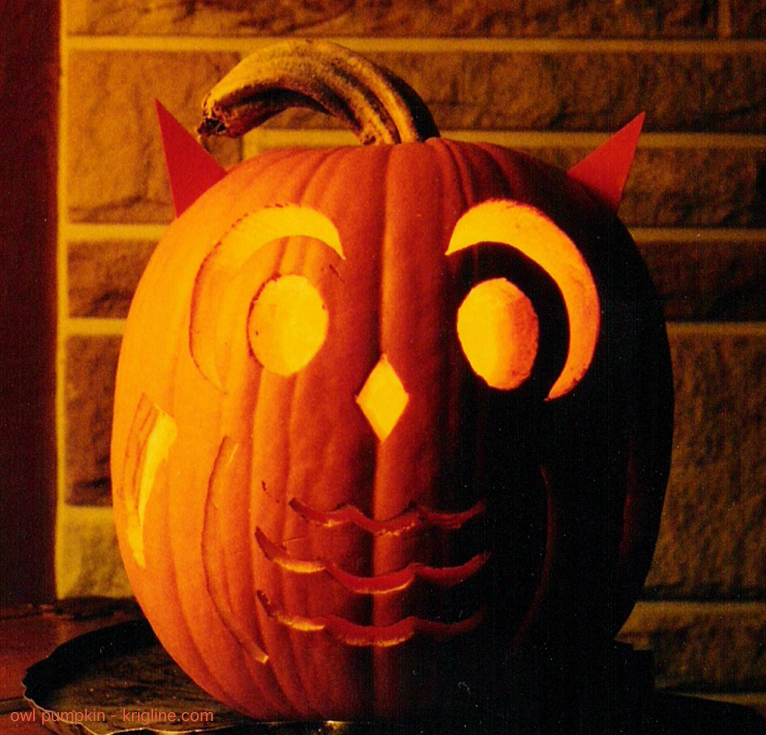
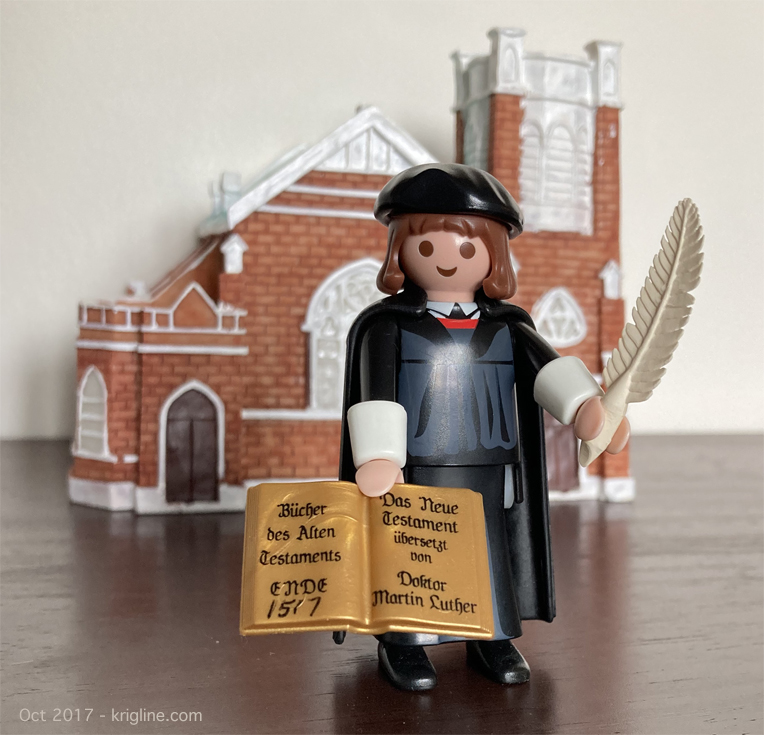

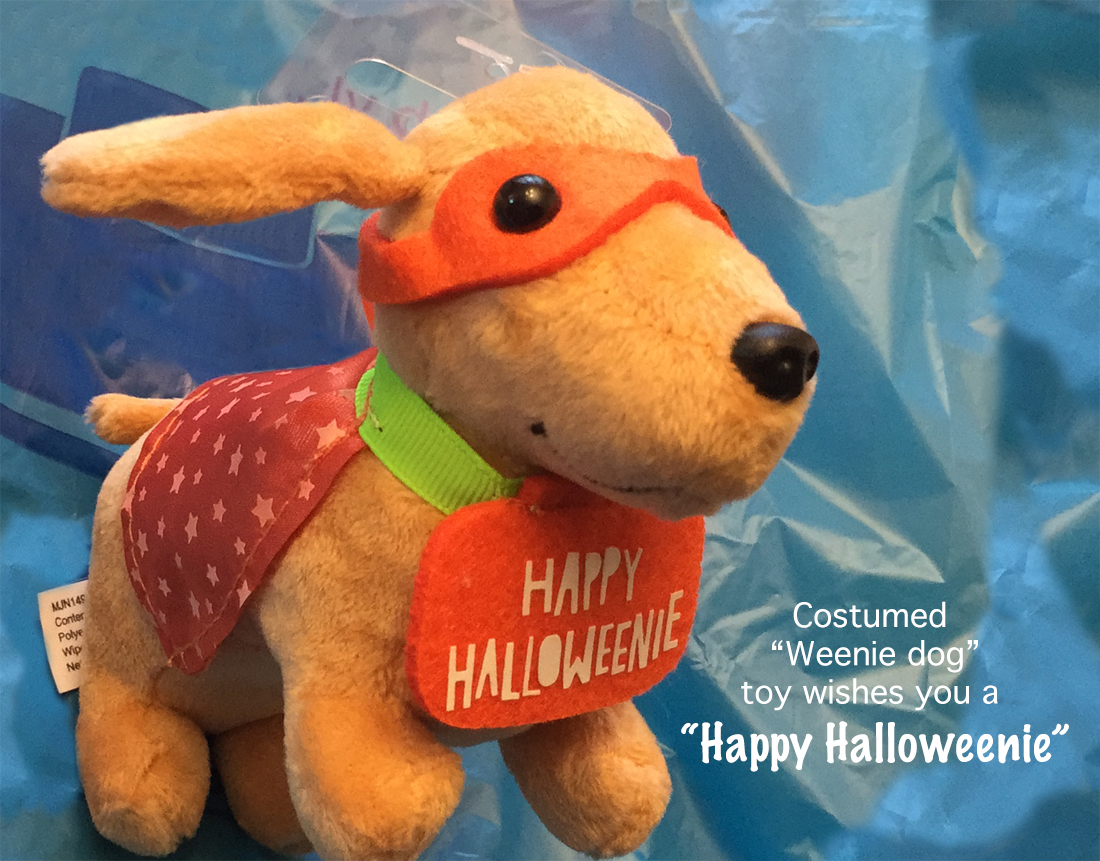
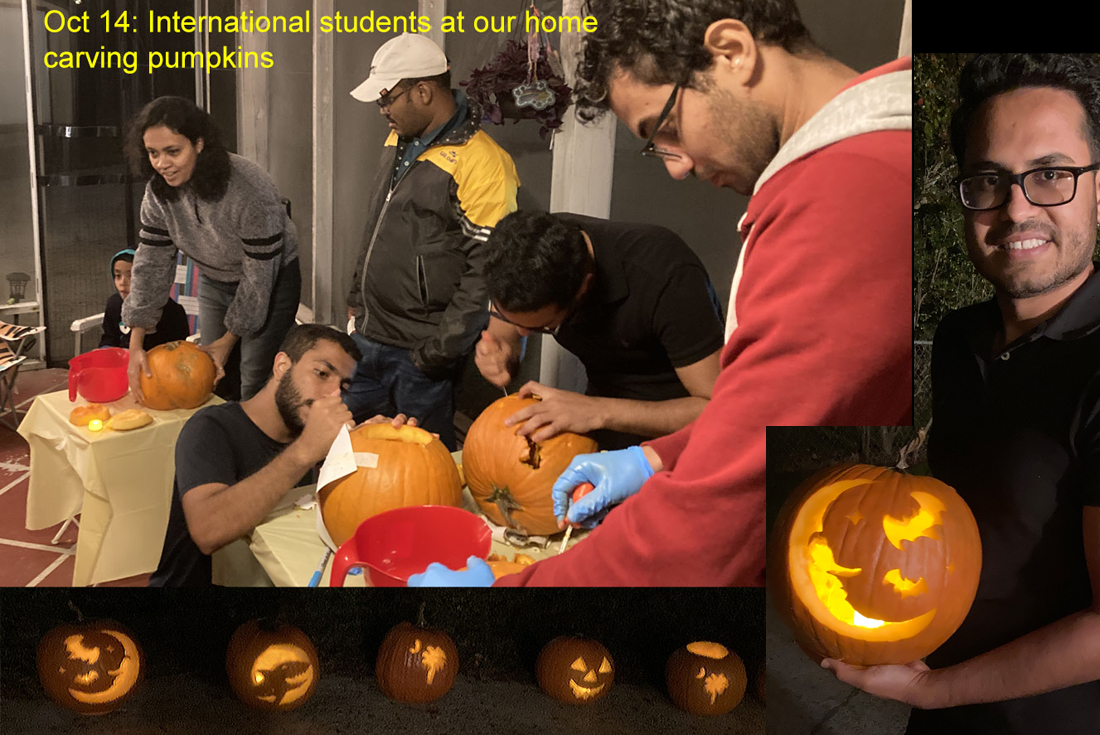
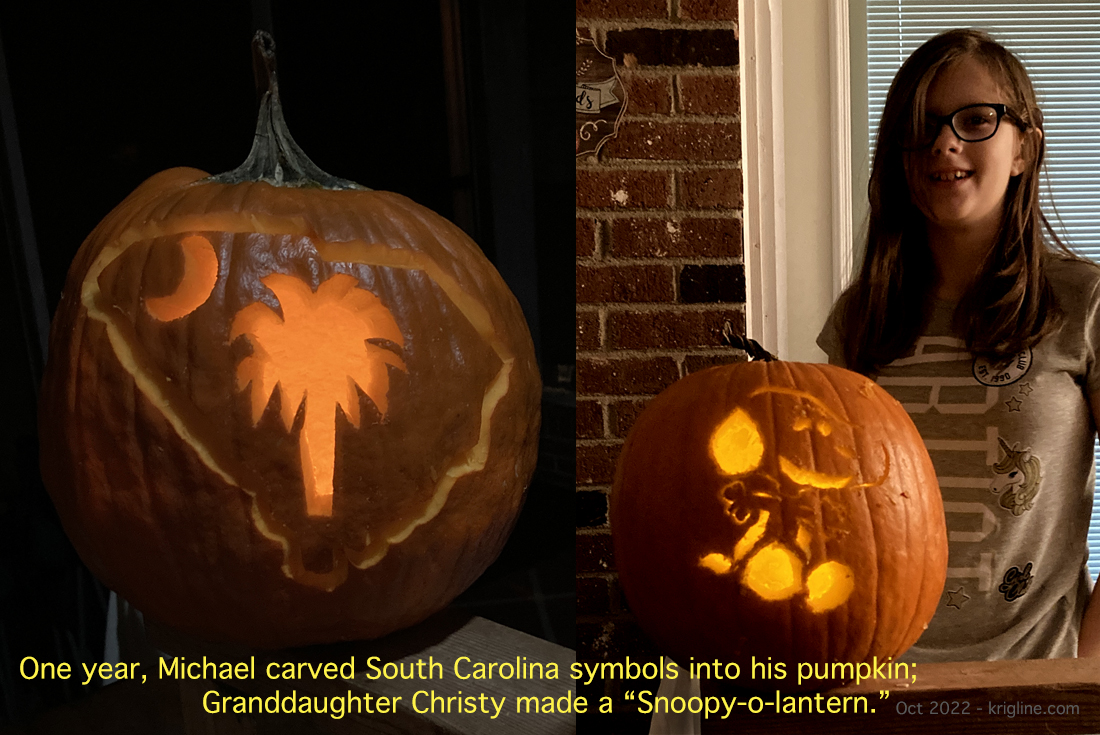
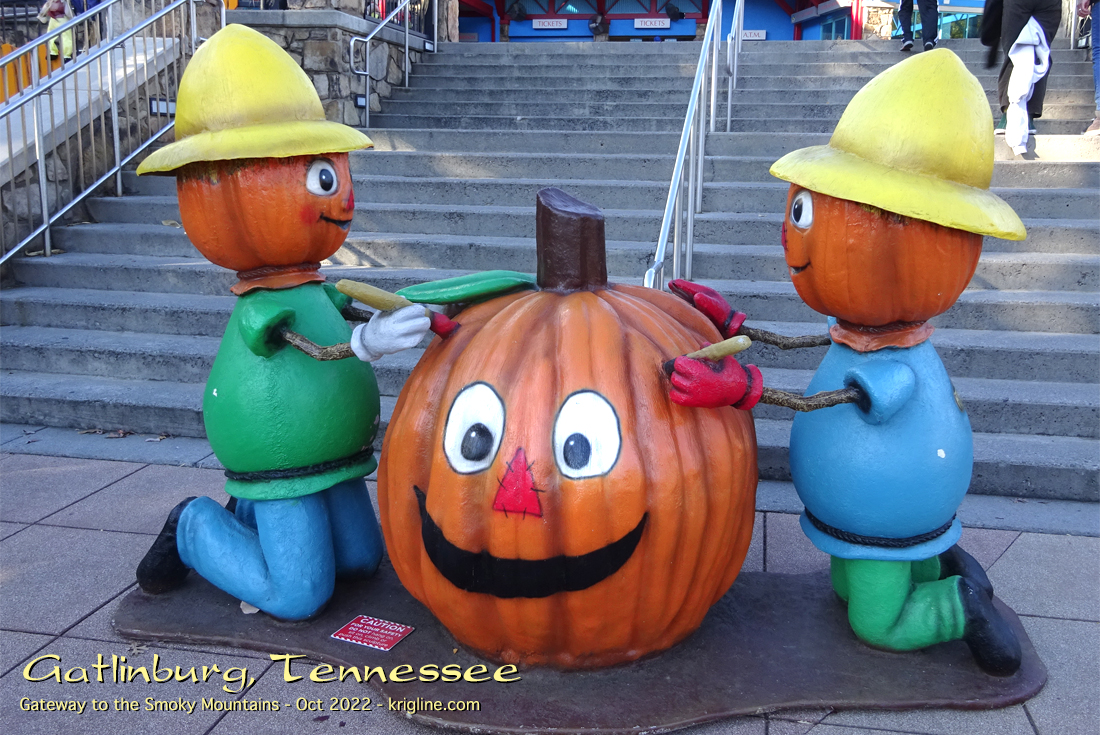
~ ~ ~ ~ ~ ~ advertisement ~ ~ ~ ~ ~ ~
Understanding Halloween (lower English level)
October 31 is Halloween. Historically, Halloween marked the Celtic New Year, when people believed that ghosts could walk among us. Sometimes, ghosts would be disguised, which is the root of modern Halloween costumes. Because of its roots, Halloween decorations are often related to evil or death (ghosts, the color black, etc.)
On Halloween, American children like to wear costumes and sometimes visit neighbors. They knock on doors and yell “Trick or treat!” to get a few pieces of candy. In recent years, trusted organizations like libraries sometimes offer alternative parties. For example, a church might host “Trunk or treat,” when members decorate the trunk of their car, passing out sweets to visitors. You may also see adults wearing costumes to work, or at Halloween parties.
Jack-o-lanterns (carved pumpkins) are also popular. As the story goes, a stingy man named Jack tricked the Devil. After Jack’s death, both heaven and hell refused entrance, so Jack roams the earth on Halloween with a hot coal from hell to light his way. Jack carved a pumpkin to make a lantern for his coal.
Today, some people avoid Halloween saying that “evil” should be taken more seriously; but for many children, Halloween is just a time to dress up and get lots of free candy!
Vocabulary: (underlined terms in the article above; *key terms) sth = something; sb = somebody.
- Celtic: the Celts lived in ancient England before the time Jesus was born (0 AD/BC); today, some Celtic descendants live in Ireland, Wales and Scotland
- *spirit: related to the part of a person that lives after his/her body dies, and/or beings that exist without physical bodies (e.g., angel, devil, ghost)
- ghost: the spirit of a dead person that some people think they feel or see at a certain time or place
- *disguise: something that changes the way you look to hide who you are, how you feel, etc.; the act of doing this
- *root: origin; the first thing, from which later things (customs, laws, etc) grew; the underground part of a tree/plant.
- *costume: a disguise or set of clothing that makes you look like someone you are not [“At the party, I saw a pirate costume, plus people dressed like ghosts and TV characters.”]
- trunk (BrE boot): a storage place at the back of a car, where people carry suitcases, food just bought, etc.
- stingy: not generous
- Devil: when capitalized, the Devil is the enemy of human spirits; “devils” are fallen angels or evil spirits
- *heaven: God’s perfect home, where people can go after death if they are as perfect as God, or have a relationship with God
- *hell: a place of punishment after death for people who did not live perfect lives
- lantern: something you can carry or hang that provides light
Discussion: (Do you want to ask the teacher about anything in the article?)
- Content questions:
- What is the date of Halloween every year?
- What do children get when they yell “Trick or treat”?
- What is the root of the modern practice of wearing a costume on Halloween?
- How do some adults celebrate Halloween?
- Tell me about “Jack,” who carved the first Jack-o-lantern.
- If a friend asked you to describe Halloween in a few words, what would you say?
- From what you know about this holiday, what is the best or most interesting part?
- Why do children (and even adults) like to wear costumes? If you went to a Halloween party, what kind of costume would you want to wear?
- In your culture, is there a holiday related to death or the spirit world? If so, tell us about it. Why do many cultures have such holidays?
- Would you want your children to visit your neighbors on Halloween, or go to a party at a trusted place like a church or library? Explain.
- Do you believe in heaven and hell? Why or why not? If you do, who do you think gets to go to heaven, and what makes you believe this? (If you wish, read and discuss Philippians 3:20-21: “But our citizenship is in heaven, and from it we await a Savior, the Lord Jesus Christ, who will transform our lowly body to be like his glorious body, by the power that enables him even to subject all things to himself.” ESV)
——————————————————————————————————————–
Sources include: (this list does not imply agreement from or with the source)
–https://www.elcivics.com/halloween.html
–https://halloween.com/2020/halloween-symbols/
–https://www.livescience.com/16677-halloween-superstitions-traditions.html
–https://www.bbc.co.uk/religion/religions/christianity/holydays/halloween_1.shtml
EFLsuccess.com; ©Michael Krigline, all rights reserved. This resource was created for our students under my understanding of “fair use” for educational resources. As far as I am concerned, people are allowed to print/copy it for personal or classroom use. See our Website Standards and Use Policy.
~ ~ ~ ~ ~ ~ advertisement ~ ~ ~ ~ ~ ~

